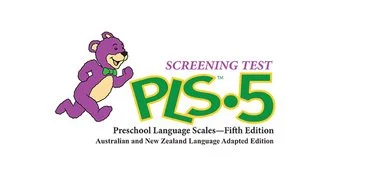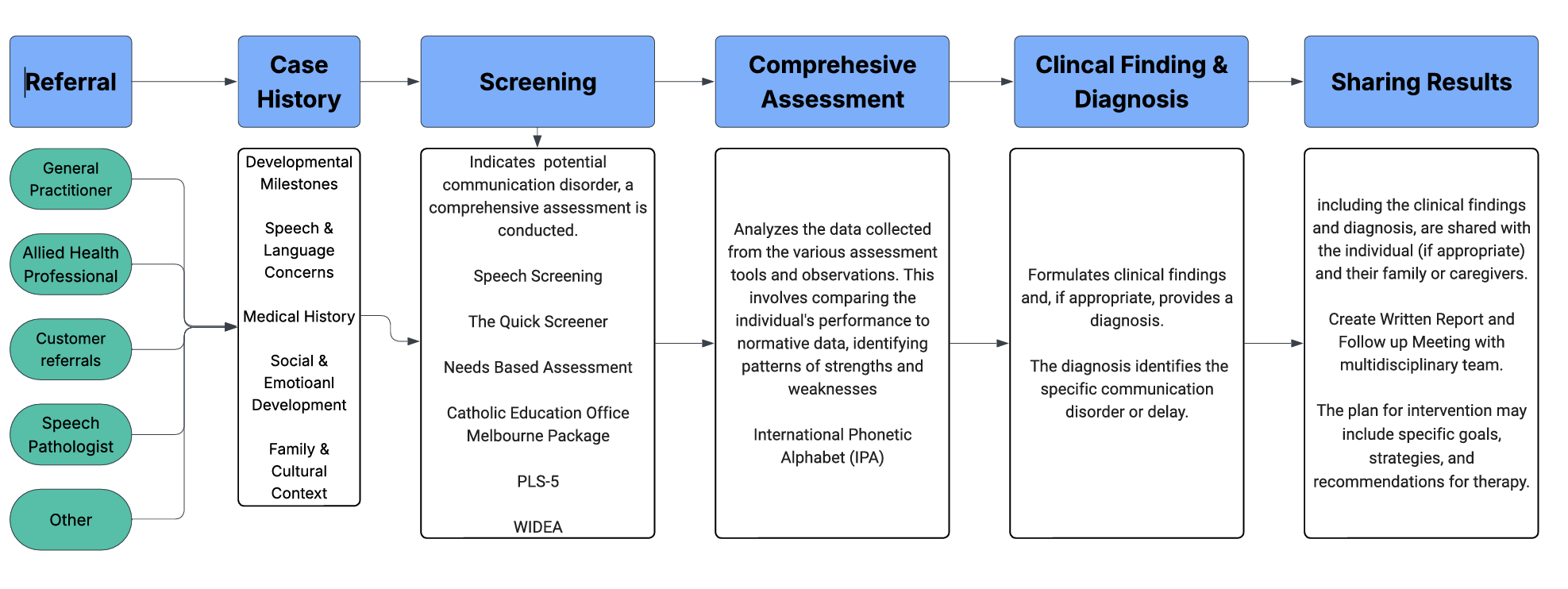“Your Voice Can Change the World”
-
A comprehensive assessment will help determine if Mila has a speech sound disorder including;
The Quick Screener, Caroline Bowen 2007 (Quick Screener.pdf)
Adaptive and Functional Skills (WIDEA-FS):
Needs Base Assessment:
Preschool Language Scale-5 Screening Test (Scale-5 Test)
Diagnostic Evaluation of Articulation & Phonology and Toddler Phonology Test (Toddler Phonology Test)
etc.
Example of how each tool is administered is proving in Clients Notes.
Norm-referenced: Compares a child’s skills to same-age children, like using standardised tasks such as naming objects or repeating sentences PLS-5. These tasks help show whether development is typical or delayed.
Criterion: Measures skills against specific benchmarks using tools like the Diagnostic evaluation of articulation and phonology and toddler phonology test or therapy goal checklists. These assess tasks like producing specific sounds or understanding basic concepts.
Authentic Assessment: Looks at real-life communication using methods like play-based observation, language sampling, or interactions with familiar people in natural settings (no formal test needed).
Functional/Adaptive Assessment: Assesses everyday communication and life skills using tools like the WIDEA-FS. This involves parent interviews and checklists focusing on daily routines, play, and social skills.
-
We involve families in all decisions. Their insights into daily routines and challenges help us set goals that are meaningful and achievable.
We respect each family’s cultural background and adapt our communication, resources, and therapy to reflect their values, language, and needs.
Each client’s interests, personality, and emotional wellbeing guide the way we assess and support them. We focus on building confidence through strengths-based, individualised care.
-
Currently, our services span across the Clarence Valley and newly Ballina. Due to this, our availability varies depending on the duration and type of treatment. Expected 2-6 Mouths for full treatment. 1-2 mouths Basic Support
-
Quick Screener – Steps
Set up a quiet, comfortable space
Create a calm environment with toys or books.Build rapport
Chat or play briefly to help the child feel at ease.Speech tasks
Ask the child to name objects or repeat simple words/sentences. Listen for sound errors or unclear speech.Language tasks
Ask questions and give simple instructions. Watch for grammar, vocabulary, and understanding.Observe communication in play
Watch how the child communicates naturally—e.g., asking for help, making comments.Record notes
Fill in the screener form based on what you hear and see.Discuss results with parents
Share observations and recommend next steps if needed.
-
Mila’s main concern is unclear speech. Using tools like the PLS-5, Quick Screener, and CEOM Screener, we can see that her hearing and language comprehension are age-appropriate, but further assessment is needed to explore a possible speech sound disorder.



